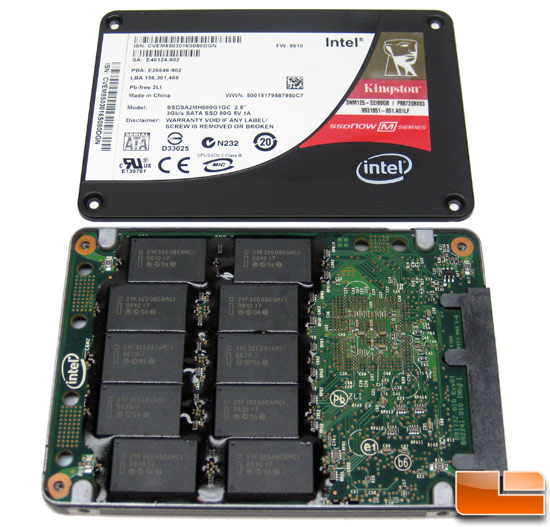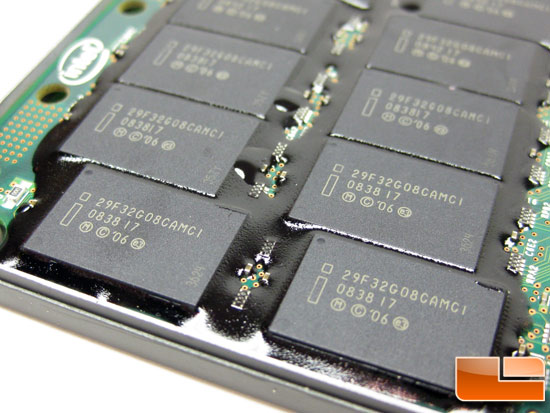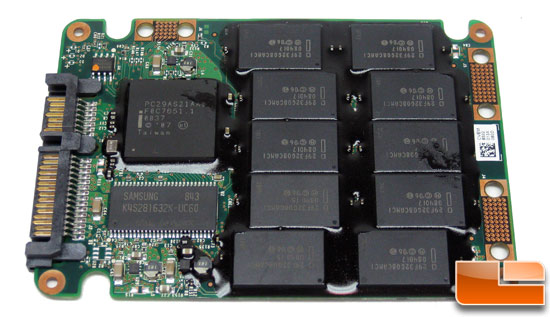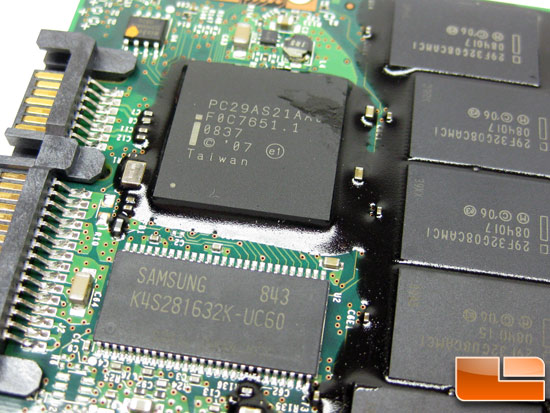Kingston 80GB SSDNow M Series Drive Review
Inside The SNM125-S2/80GB

Since the Kingston SSDNow M Series 80GB drive is said to be identical to the Intel X25-M SSD, we took it apart just to make sure. The label located on the cover of the drive as being SSDSA2MH080G1GC, which is different from the last Intel X25-M that we reviewed as it was model number of SSDSA2SH080G1GN. Removing the four Philips screws located on the corners of the top cover the inside of the drive can be accessed. With the cover removed we see a total of ten Intel NAND Flash memory chips, but that is just this side of the drive.

The NAND flash memory Multi-Level Cell
(MLC) components are made by Intel and have part number 29F32G08CAMCI etched on the top of them. The Kingston SSDNow M Series 80GB drive has ten of these MLC chips per side for a total of 20. The NAND chips have a black polymer coating around them, which is likely to help the vibrating tolerance of the drive as it is an impressive 2.17 G (7-800 Hz) while operating and 3.13 G (10-500 Hz) during a non-operating state. When it comes to shock tolerance the SNM125-S2/80GB can handle up to 1,000 G/0.5 msec operating and non-operating!

Removing the drive from the housing and flipping it over we can take a look at the other side, which has the Intel branded controller (PC29AS21AA F0C7651.1) and the on-board 16 MB DRAM chip by Samsung.

The Intel controller has the ability to do read and write operations
across 10 parallel channels, which is tough to compete with as many competing SSDs on
the market today have fewer than ten channels. To help handle all this bandwidth Intel includes a
16MB Samsung DRAM IC is used as a cache buffer for the flash memory
controller ASIC in situations where some of the data needs to be stored
for a split second. This SSD also supports Native Command Queuing
(NCQ), which allows drive to accept 32 concurrent commands at a time
and dynamically reorder the commands for maximum efficiency. NCQ, when
used in conjunction with a hard drive that supports NCQ, can increase
storage performance on random workloads. Intel also uses lower write
amplification ratios and has wear-leveling feature that reduces drive
wear and tear more so than other drives. The life expectancy of the
SSDSA2MH080G1GC, is 1.2 million hours mean time before failure (MTBF).
Intel claims their Endurance Management Feature enables five years
minimal useful life, which means the drive should easily live longer
than the 3-year warranty that it comes with.

Comments are closed.